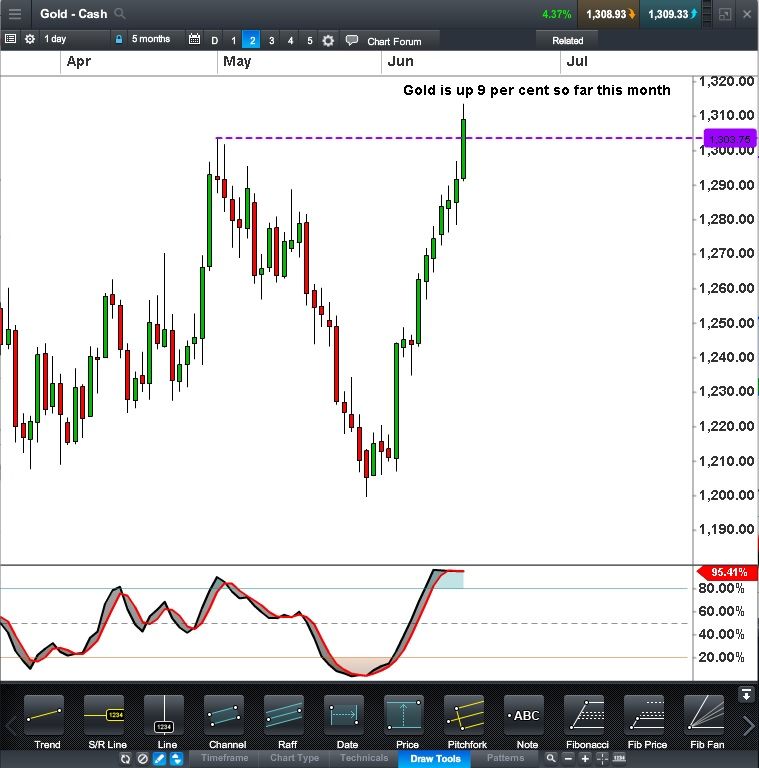
Brexit looms as a major risk event for markets. This post looks at what you need to know about the day of the vote; potential market implications and some tips for sensible risk management.
Brexit Basics
On Thursday 23 June, Briton’s will vote on the following question
Should the United Kingdom remain a member of the European Union or leave the European Union?
There will be no exit polls taken. Markets will need to wait for the official count to gauge how the vote is going. Counting will commence when the polls close at 22:00 GMT (7am Friday 24 June AEST). How long it takes to declare a result will depend on how close the vote is. Projections are that this may be possible around 4am GMT (1pm AEST).
If Britain does vote to leave the UK, it won’t be a quick divorce. The terms of departure will need to be negotiated and formalised in a process that could take years.
Trading implications
As anyone interested in trading will be well aware, the Brexit vote is looming as a major market risk event. Sure, many of these much anticipated market events turn out to be “fizzers”. However, some do not. The Brexit vote is no different. A whole range of market outcomes look possible. These range from:
- Not much impact at all
- Large short term volatility including price spikes and gaps
- Major trending moves in the days following the vote.
Traders will have their own views on whether Brexit is a good or a bad thing and so what it might ultimately mean for markets. In general though, the biggest potentials impacts seem likely to be on:
- The UK economy. Opinion among analysts and economists on the how Brexit will impact the UK economy is remarkably divided. Some believe it will be a negative; others see it as a clear positive and still others believe it won’t make much difference at all. To some extent this may depend on the exit negotiations. The headline markets most in the firing line here will be:
- The Pound and
- The UK 100 index
- The European economy. There is probably more consensus around the possibility that Brexit could pose political and economic risks for Europe. This centre’s around the possibility that Brexit could open Pandora’s Box. More countries might look to leave the EU at a time when Europe is facing major economic and political challenges. Markets in the firing line here could be:
- The Euro and
- All the European stock markets and indices like the Germany 30
- Safe Haven Assets. Depending on how the vote goes a risk event like this typically triggers a rush into or out of traditional safe have assets. Markets in the firing line here could include:
- The US Dollar
- US Bonds
- The Japanese Yen
- Gold
- The Swiss Franc. One thing to be alert to here is the possibility that the Swiss Central Bank might again take action to stop its currency being pushed too high if markets look to it as a sanctuary from the Pound or the Euro
The lead up could be important. In recent days we have seen some sizeable moves in anticipation of a possible Leave vote. Gold has rallied, stock markets have dropped and the Pound is weaker. The further markets move in this “safety” direction prior to next week’s vote, the greater the risk of two way volatility. A leave vote could produce some large moves but so could a remain vote. It would see these “safety moves” quickly unwound in a major “risk on” move.

Risk Management
As a safety precaution, CMC will be making temporary increases to margin requirements ahead of the Brexit vote. These will take effect from Monday 20 June 2016. Clients have received an email regarding these changes and you should make sure you are familiar with them.
If you do plan to trade around the Brexit vote, it will be more important than ever to adopt sensible risk management practices. A good idea is to think in advance about the worst possible losses that could result from any trades you have. Then make sure that the size of those trades is small enough to ensure that these worst case scenarios are well and truly covered by the funds in your account.
Good traders also aim to make sure that their positions are limited so that even the worst case moves on any single market event, lose only a relatively small proportion of the total capital they have decided to devote to trading.


